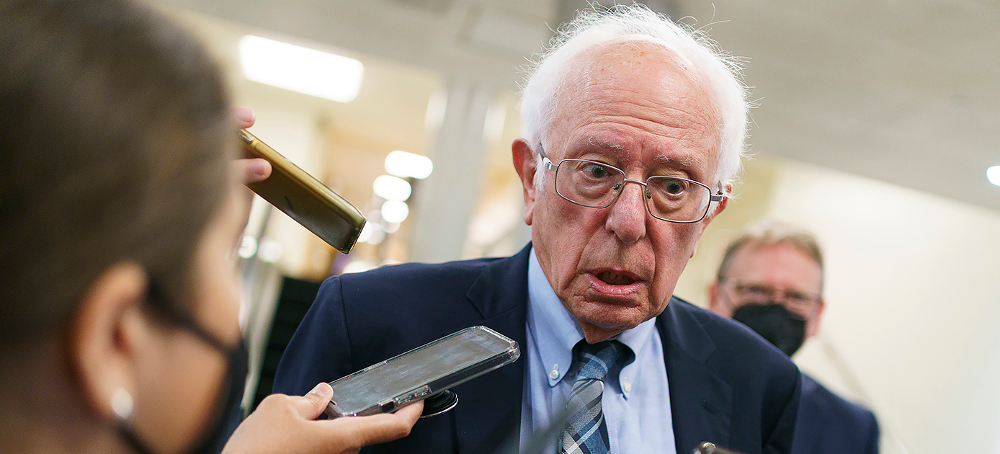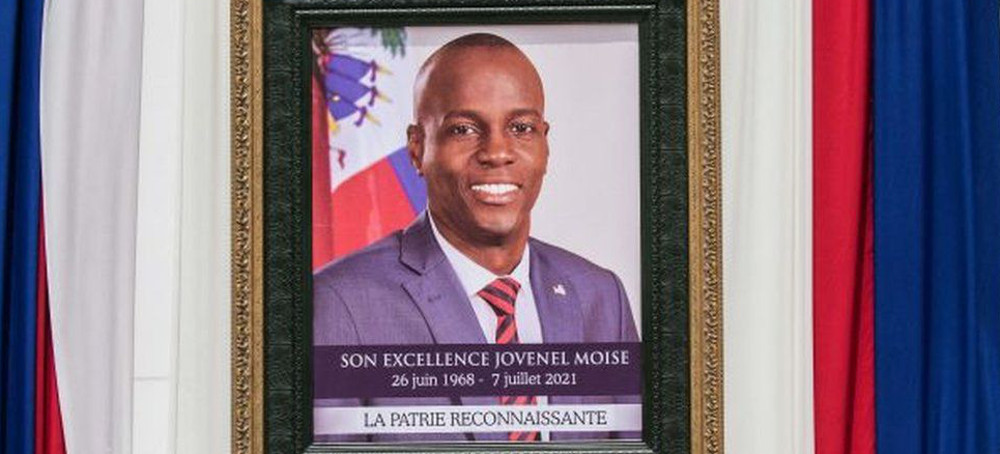Live on the homepage now!
Reader Supported News
Without shame
The news fatigue is real. We are buffeted by unending stories of domestic instability over our democracy, our health and safety, and our constitutional rights. War is raging in Europe, bloody crackdowns are occurring in Iran, and China is increasingly belligerent. Oh, and of course, there are also the climate crisis and the lingering pandemic.
In this seemingly unrelenting negative news cycle, a blockbuster report like The New York Times’ “How Barr’s Quest to Find Flaws in the Russia Inquiry Unraveled” can slide into the category of “old news” without the full attention it deserves. That would be a shame. For despite its understated headline, the piece raises serious concerns about powerful government officials and the milieu in which they operate.
As close followers of current events, many of you likely either read the original article or saw follow-on reporting and analysis. It is a careful and comprehensive piece of journalism. It paints a narrative through context, fact finding, and illustrative anecdotes about how the former attorney general, William Barr, blatantly overstepped the bounds of his office.
While Republicans have argued that Democrats have politicized the Department of Justice, the evidence presented here proves it was Barr who did exactly that in order to justify President Trump’s unfounded (and self-serving) conspiracy theories. Rather than search for the truth, Barr worked to obfuscate it. That he knew better makes the offense all the more disgraceful.
The article focuses on the lengthy, costly, and ultimately fruitless “investigation” by John Durham of conspiracy theories Trump promulgated about Russian election meddling in 2016. Trump claimed that law enforcement and the intelligence community (whose work ultimately was included in the Mueller report detailing real Russian election interference) were merely “deep state” operatives seeking to undermine Trump.
We put “investigation” into quotes here because, as the article makes clear, Durham and Barr’s approach was not “let the facts lead us to the truth” but rather “how can we validate the malarkey the president says he believes to be true.” Although, after reading this reporting, it now seems that Barr himself had come to at least consider, if not fully embrace, these feverish fantasies. The entire article is worth a read, as it is full of jaw-dropping details.
There was great fanfare on Fox News and other right-wing media outlets (not to mention from the man in Mar-a-Lago) throughout Durham’s endeavor. It stemmed from a widespread belief that once Durham started digging, he would find smoking guns of Democratic duplicity everywhere. Conservative media platforms primed their readers and viewers with a sense that a judgment day loomed ahead, and that it might bring down not only Biden and the current Democrats, but Barack Obama and Hillary Clinton to boot.
All this is catnip for conservatives, red meat for reactionaries.
Durham is but the latest former Trump administration official to see that tenure damage, if not ruin, a previously respectable reputation. As Durham’s work concludes, the “sound and fury” that accompanied his appointment have eroded to the point of “signifying nothing.” One can only speculate what Shakespeare would have done with a character like his.
Or like Barr, for that matter.
Barr’s resume of government service in more conventional Republican administrations might have suggested a different code of conduct. But alas, he did the nefarious biddings of Trump almost to the end. Last year, Barr went on a PR tour for his book, One Damn Thing After Another. The title suggests a man eager to set the record straight with hard candor. The reality was far different. Barr was not a truth teller but a toady to the Trump party line, the facts and the health of American democracy be damned.
There has been a lot of talk over the last several years about how history will judge Trump and his cronies harshly — Barr included. One gets the sense that most of this crowd really doesn’t care. If they get their way, there won’t be much teaching of factual history anyway. In the meantime, they can hunker down in their lucrative fact-free echo chambers.
There was a time when the media and political landscapes were far less fractured. Public censure meant a lot more. Shame and embarrassment were deterrents. Sadly, Trump demonstrated that extreme right-wing politicians could embrace shamelessness as a successful campaign strategy. And so too could an attorney general, in a craven exercise of illegitimate power.
READ MORE  Sen. Bernie Sanders (I-VT) speaks to reporters in the Senate Subway during a series of nomination votes on Thursday, September 8, 2022. (photo: Greg Nash)
Sen. Bernie Sanders (I-VT) speaks to reporters in the Senate Subway during a series of nomination votes on Thursday, September 8, 2022. (photo: Greg Nash)
“The Democratic Party must not allow Oligarchs and their super PACs, often aligned with Republicans, to buy Democratic Party primaries,” Sanders said in a letter to DNC Chairman Jaime Harrison and other party leadership. “I believe strongly that there should be public debate and a vote on this important measure.”
Sanders, who built a lucrative grassroots donor network during his two campaigns for president in 2016 and 2020, has called on the party to ditch super PAC spending in the past. However, the organization did not vote on the measure at its last meeting.
Now Sanders is reigniting his pitch to the DNC to consider the measure, saying conservative PACs funded by right-wing billionaires have waded into Democratic primaries to tip the scales against progressive candidates.
“In the last election cycle, right-wing billionaires funded millions of dollars in spending against progressive candidates in competitive primaries,” Sanders said in the letter. “Those funds were often used by super PACs to run outrageous and dishonest attack ads.”
Sanders’s campaign against super PACs is not a new stance for the independent senator who caucuses with Democrats. The progressive has long been a critic of wealthy donors in political campaigns.
The DNC did not immediately respond to a request for comment.
READ MORE Demonstrators protest the the killing of Tyre Nichols by Memphis Police on January 27, 2023 in Memphis, Tennessee. (photo: Joshua Lott/Getty)
Demonstrators protest the the killing of Tyre Nichols by Memphis Police on January 27, 2023 in Memphis, Tennessee. (photo: Joshua Lott/Getty)
The specialized division that included SCORPION, the anti-crime unit responsible for beating Tyre Nichols.
The department shut down the unit the day after police released body-camera footage of members of the unit beating Nichols to near the point of death. The father, skateboarder, and photographer died three days later in the hospital from injuries inflicted by the police.
The Memphis police unit, Street Crimes Operation to Restore Peace in Our Neighborhoods, or SCORPION, is part of a trend in policing in which highly armed groups of police are dispatched to “high-crime” areas that tend to be home to Black and brown residents.
The specialized units have been popping up all over the country, proposed in response to reports of rising violent crime. Some of the anti-crime units have been accused of excessive force; in the killing of 26-year-old Breonna Taylor by Louisville, Kentucky, police in 2020, that force was deadly. In addition, the units, as in the case of SCORPION in Memphis, are expensive to maintain, rekindling a national debate about the funding of police departments.
“The SCORPION unit is what ‘fund the police’ rhetoric looks like in reality,” Working Families Party National Director Maurice Mitchell said in a statement to The Intercept. “Instead of pouring more money into militarized forces that brutalize, terrorize, and even murder, we should fund libraries, after-school programs, good jobs, and other investments proven to keep us safe.”
Memphis spends more on policing than almost any other service provided by the city. In 2022, the department’s budget was $275.7 million, or 39 percent of the city’s total that year. Of that sum, $28.3 million was allocated to a division for special operations that includes the organized crime unit, which houses the SCORPION unit that stopped Nichols, along with air support, a canine unit, mounted patrol, traffic, and other teams.
In a May city council meeting on the department’s 2023 budget outlook, Police Chief Cerelyn Davis discussed some of the department’s highlights for the year, including the creation of crime-targeting units like SCORPION, which Davis said “have been very effective.”
The Memphis Police Department’s proposed budget for 2023 is $284.75 million, an increase of just under $10 million.
Memphis launched the SCORPION unit in October 2021 as part of Mayor Jim Strickland’s strategy to fight crime and gun violence after a record number of homicides that year. Part of the organized crime division, the unit was composed of 40 officers and used crime data to determine where it would conduct enforcement activities.
In its first three months in operation, the SCORPION unit made more than 560 arrests.
On Saturday, the Memphis Police Department announced that the unit would be disbanded after “listening intently” to Nichols’s family, community leaders, and other officers. A former Memphis cop told CBS News that the unit was composed of young officers with little experience and that training was scant and included three days of PowerPoint presentations, one day of training in suspect apprehension, and one day at a firing range.
In a statement made Thursday, Ben Crump, the attorney representing Nichols’s family, specifically criticized the SCORPION unit and others like it around the country.
“‘Pro-active policing’ or ‘saturation unit policing,’ whether the officers are in unmarked cars wearing tactical vests or ‘jump-out boys’ in plain clothes and undercover, is defined by several common and dangerous components,” Crump said. “The behavior of these units can morph into ‘wolf pack’ misconduct that takes away a person’s liberty or freedom to move, akin to a kidnapping.”
The traffic stop that led to Nichols’s death, Crump said, was “far outside the unit’s stated purpose of stemming violent crime.”
Nationally, debates about police funding have become a hot-button electoral issue. The call to defund gained steam among activists and the left wing of the Democratic Party, leading to attacks from Republicans who, without evidence, painted their opponents as soft on crime. The result has been that most Democratic Party politicians outdo one another to burnish pro-police bona fides.
That trend, said Mitchell, the Working Families Party director, is based on a logic that continues to give police huge budgets — and carte blanche — to pursue policies and tactics that harm urban communities.
Mitchell said, “Memphis should be a wake up call for Democrats.”
READ MORE  Volodymyr Yezhov was killed defending the city of Bakhmut in Ukraine's Donetsk region on December 22. (photo: Efrem Lukatsky/AP)
Volodymyr Yezhov was killed defending the city of Bakhmut in Ukraine's Donetsk region on December 22. (photo: Efrem Lukatsky/AP)
Volodymyr Yezhov took part in pro-West demonstrations in 2014 and was quick to sign up to fight after Russia’s war began.
He joined the army shortly after Russian tanks rolled into towns and cities including the capital, Kyiv, telling his family he wanted to fight for his country’s freedom.
In an interview with Al Jazeera, his brother, Slava Yezhov, recalled how Volodymyr was proud to be Ukrainian, taking part in pro-Western protests in 2014.
Those rallies ultimately toppled the government at the time, and ran former pro-Russian President Viktor Yanukovych out of Ukraine.
So Slava was far from surprised when Volodymyr, a father of two, enlisted to fight against the Russian invasion.
While serving in Bakhmut, Volodymyr created a messenger group for his family so he could keep in touch with them.
“Every morning, before going to the mission, he would say we are going to the mission,” Slava said.
“And every evening, when they got back, he messaged us that he is back safe.”
But last month, one of those messages failed to arrive as battles raged in eastern Ukraine.
“My father made a call to me. I couldn’t believe it, and I didn’t want to believe it. But it was a hard time for us all,” Slava said.
Having grown up in northern Ukraine, Volodymyr worked as an online games tester and developer in the capital city, Kyiv.
He helped create a popular game called Stalker. The face of one of the game’s characters was modelled on his.
As the brothers communicated via a messaging app, Slava said it was increasingly clear how much the war was impacting Volodymyr by the expressions on his face.
But even as he mourns, he still believes Volodymyr would not have backed out.
“I am sure that he would have done it again,” he said.
Ukraine says more than 13,000 soldiers have been killed in the war. Russia rarely acknowledges its losses; in September Moscow said 6,000 troops had been killed.
The real numbers are feared to be much higher than official tolls. A top United States general recently said about 100,000 soldiers on both sides had likely been killed.
READ MORE  A construction worker uses his phone while on break. (photo: Anthony Wallace/AFP)
A construction worker uses his phone while on break. (photo: Anthony Wallace/AFP)
We are rightly skeptical of apps because the tech industry has plundered the commons, but a new app for union organizing should be given the opportunity to demonstrate proof of concept. Anything that makes union organizing easier has the potential to do good.
Our collective cynicism about the offerings of the tech bro intelligentsia is now such that, whenever there’s an app release, a new tool to solve an old problem, we are wary of it. The drive to app-ify every last bit of contemporary life is a toxic mix of techno-solutionism and ever-creeping capitalist takeover of every facet of existence. We are now wise to the bargain. It’s never free, the cost is the collecting and selling of our data, tracking, and oversubscribing us at every twist and turn. Distrust of the capitalist class has been amplified by tech capitalists, who often border on cartoonishly evil.
Eyeing the latest app, YouIn?, designed to anonymously facilitate unionization, I was as skeptical as ever. Unionization is the last area of working life we ought to allow the capitalist tech class to exploit. Indeed, unions ought to serve as a bulwark against the pathologies of contemporary finance and techno-solutionism. And yet, the tool could have some promise and it ought to be given a chance to show it. Every so often, an app serves a great purpose and lives up to its advertising as, if you’ll indulge the built-for-purpose phrase, a game changer.
YouIn?, which is now in beta, allows workers to send an anonymous email invite to their coworkers, asking if they wish to join a union. As Sarah Anderson explains for Daily Hive:
Each person gets a single vote. If 60 percent or more of a workplace vote in favour of unionizing, the platform sends digital certification cards from the union they choose to represent them. Once signed, the cards are sent to that union.
The Vancouver-based startup behind the app has partnered with a handful of British Columbia (BC) unions and is looking to expand by adding others. Currently, YouIn? is tailor-made for jurisdictions with card check laws — like BC. At its best, YouIn? has the potential to aid in pushing back against anti-union resistance from owners and bosses. It could be efficient and effective, provided it is and remains, first and foremost, a tool for workers and not an investment instrument. At first blush, the app appears to be exactly what it claims to be and not one of Silicon Valley’s usual offerings of tools that extract lucre from the commons.
The company’s founder, Conley Mosterd, talks about YouIn? as a “retaliation” against workplaces hostile to unionization efforts. And its goal is a better deal and life for workers. As he told Anderson, “We believe our platform will make unionization more accessible to the younger generation in the ongoing fight for higher wages, benefits, pensions, safer working conditions, and an end to unfair workplace discrimination.”
The potential of YouIn? is significant, but its capacity to execute its goals is what matters most. If Mosterd and the app’s team build and maintain robust relationships with unions, put workers first, and treat the tool as a tool above all, with the interest of workers top of mind, then YouIn? could facilitate more unionization in BC and other provinces — and even outside Canada.
As I’ve written before, unions have made gains in recent years in Canada and the United States, even while private sector unionization rates — and thus overall rates — remain low. Unionizing workers need all the help they can get. The anonymity of YouIn? is promising but with an important caveat. Unionization ought to be a public and communal undertaking. It should not be driven underground any more than it must be. Conversations and debates within workplaces are key to building solidarity and support, which can’t be done — or are unlikely to be done as effectively — through anonymous emails. But if an app can get the process started, or test the waters, particularly in spaces where employees are worried about retaliation from bosses — especially the threat of termination — then it ought to be given a fair shot.
The essence of unionization is workers organizing to collectively empower themselves and one another to secure a fair deal against owners and bosses who, as a rule, share a different set of competing, mutually nonexclusive interests. These are relations of power and they are inherently antagonistic. An app can either facilitate union wins or work against them. There is nothing inherently anti-union about an app, and YouIn? shouldn’t be judged out of the gate. But the proof of its usefulness will be in how it functions as a tool, the behavior of those who control it, and the material outcomes that prove who it ultimately serves. YouIn? ought to be given a chance to serve workers. If it does, it could help do a lot of good.
READ MORE Jovenel Moise was shot dead in his home on 7 July 2021. (photo: Getty)
Jovenel Moise was shot dead in his home on 7 July 2021. (photo: Getty)
Four men accused of having played a key role in the assassination in of Haitian President Jovenel Moise have been transferred to the United States, where they will face charges.
Three of the suspects are dual US-Haitian citizens and one is Colombian.
They are due to appear in a federal court in Miami later on Wednesday.
The investigation being conducted into President Moise's assassination in Haiti has stalled, with investigators and judges receiving death threats. But as the plan to kill Mr Moise was allegedly hatched by Haitian-Americans in Florida, investigations are proceeding in the US.
The transfer of the four men from Haiti to Florida has brought the total number of suspects in US custody to seven.
Three of those moved to the US have been charged with conspiracy to murder President Moise. The fourth, Christian Sanon, was charged with smuggling bullet-proof vests to Haiti for use in the plot.
Those charged with conspiracy to commit murder are:
- James Solages, dual Haitian and US citizen, 37
- Joseph Vincent, dual Haitian and US citizen, 57
- Germán Alejandro Rivera, Colombian citizen, 44
Prosecutors allege that James Solages and Christian Sanon met in Florida in April 2021 to discuss "regime change" in Haiti.
According to police in Haiti, Mr Sanon, a Haitian-American doctor and pastor, had "political objectives" to replace Mr Moise as president.
Haiti's police chief at the time of President Moise's killing also said that Mr Sanon was the first person one of the assailants called as police surrounded them after the murder.
In a statement, the US Department of Justice (DoJ) said that while Mr Sanon had not been charged with conspiracy to murder, he "participated in crimes that culminated in the assassination of the Haitian president".
According to the DoJ, James Solages, Joseph Vincent and Germán Rivera had originally planned to kidnap President Moise and take him to an unknown location while a new president was installed in his stead.
But when they failed to get a plane to take the Mr Moise away, they allegedly changed their plan.
"It is alleged that on July 6, 2021, Solages, Vincent, Rivera and others met at a house near President Moise's residence, where firearms and equipment was distributed and Solages announced that the mission was to kill President Moise," the DoJ statement said.
The other man, German Alejandro Rivera, is suspected of having recruited the Colombian mercenaries who made up the hit squad hired for the purpose.
All four men were arrested in Haiti shortly after President Moise's assassination and been held in the Caribbean nation until their transfer on Tuesday.
If found guilty, Mr Sanon could face up to 20 years in jail while the three other suspect could be sentenced to life in prison.
The political void left by the killing has led to a surge in violence and lawlessness across Haiti.
READ MORE  After months of tense negotiation, a half-dozen states have reached an agreement to drastically cut their water usage and stabilize the drought-stricken Colorado River. (photo: RJ Sangosti/Getty)
After months of tense negotiation, a half-dozen states have reached an agreement to drastically cut their water usage and stabilize the drought-stricken Colorado River. (photo: RJ Sangosti/Getty)
The plan would cut water use on the river by roughly a quarter, drying up farms and subdivisions across the Southwest.
On Monday, six out of the seven states that rely on the Colorado announced their support for steep emergency cuts totaling more than 2 million acre-feet of water, or roughly a quarter of annual usage from the river. The multi-state agreement, prodded into existence by the Biden administration’s threats to impose its own cuts, will likely serve as a blueprint for the federal government as it manages the river over the next four years, ushering in a new era of conservation in the drought-wracked Southwest. While the exact consequences of these massive cuts are still largely uncertain, they will almost certainly spell disaster for water-intensive agriculture operations and new residential development in the region’s booming cities.
But California, which takes more water than any other state, has rejected the proposal as too onerous, instead proposing its own plan with a less stringent scheme for cutting water usage. If the federal government does adopt the six-state framework, powerful farmers in California’s Imperial Valley may sue to stop it, setting up a legal showdown that could derail the Biden administration’s drought response efforts.
Nevertheless, the general consensus on pursuing immediate, dramatic water cuts is unprecedented.
“It puts something down on the table that we haven’t had before,” said Elizabeth Koebele, an associate professor at the University of Nevada-Reno who studies the Colorado River. “The states are saying, ‘We recognize just how bad it is, and we’re willing to take cuts much, much sooner than we had previously agreed to.’”
The Colorado River has been oversubscribed for more than a century thanks to a much-maligned 1922 contract that allocated more water than actually existed, but it has also been shrinking over the past 20 years thanks to a millennium-scale drought made worse by climate change. Last year, as high winter temperatures caused the snowpack that feeds the river to vanish, water levels plummeted in the river’s two key reservoirs, Lake Powell and Lake Mead, threatening to knock out electricity generation at two major dams.
Federal officials intervened in June, ordering the seven Colorado River Basin states to find a way to reduce their annual water usage by between 2 and 4 million acre-feet. This was a jaw-dropping demand, far more than the states had ever contemplated cutting, and they blew through an initial August deadline to find a solution. The feds upped the pressure in October, threatening to impose unilateral cuts if state officials didn’t work out a solution.
As the interstate talks proceeded, long-buried conflicts began to resurface. The first major conflict is between the Upper Basin states — Wyoming, Colorado, New Mexico, and Utah — and the Lower Basin states: Nevada, Arizona, California, and Mexico. The Upper Basin states argue that the Lower Basin states should be the ones to cut water in response to the drought. These states use much more water, the argument goes, and they also waste a lot of water that evaporates as it flows downstream through reservoirs and canals. The Lower Basin states, meanwhile, argue that no states should be exempt from cuts, given the scale of reductions needed.
The other main conflict is between Arizona and California, the two largest Lower Basin water users and the main targets of future cuts. California’s water rights trump Arizona’s, and therefore the Golden State argues that Arizona should shoulder almost the whole burden of future cuts. Arizona argues in turn that its farms and subdivisions have already cut their water usage in recent years as the drought has gotten worse, and that water-rich farmers in California should do more to help.
In the middle of these warring parties is Nevada, which takes only a tiny share of the river’s water and has emerged as the Switzerland of the Colorado River system over the past year. Water officials from the Silver State have been trying since late summer to broker a compromise between the Upper and Lower Basins and between Arizona and California, culminating in an intense session of talks in Las Vegas in December.
The talks were only partly successful. Officials managed to work out a framework that meets the Biden administration’s demands for major cuts, bringing an end to a year of uncertain back-and-forth. The proposal would cut more than a million acre-feet of water each from Arizona and California during the driest years, plus another 625,000 acre-feet from Mexico and 67,000 acre-feet from Nevada, adding new reductions to account for water that evaporates as it moves downstream. In return for these Lower Basin cuts, the Upper Basin states have agreed to move more water downstream to Lake Powell, helping protect that reservoir’s critical energy infrastructure — but they haven’t committed to reduce any water usage themselves.
“It seems like the Lower Basin states conceded to the Upper Basin,” said Koebele. An earlier version of the six-state proposal called for the Upper Basin to reduce water usage by a collective 500,000 acre-feet, but that call was absent from the final framework.
While the fight between the Upper and Lower Basin states appears neutralized, the conflict between the Lower Basin’s two biggest users is ongoing. Around 40 percent of the agreement’s proposed reductions come from California, where state officials have slammed it as a violation of their senior water rights, derived from a series of laws and court decisions known collectively as the “law of the river.”
“The modeling proposal submitted by the six other basin states is inconsistent with the Law of the River and does not form a seven-state consensus approach,” said J.B. Hamby, California’s lead representative in the talks. Hamby argued that penalizing California for evaporation losses on the river contradicts the legal precedent that gives California clear seniority over Arizona.
Officials from the Golden State released their own rough framework for dealing with the drought on Tuesday. The plan offers a more forgiving schedule than the six-state framework, saving the largest cuts for when Lake Mead’s water level is extremely low, and it forces more pain on Arizona and Mexico. The framework only requires California to cut around 400,000 acre-feet of new water, which the biggest water users already volunteered to do last September in exchange for federal money to restore the drought-stricken Salton Sea. Water users in the state haven’t made new commitments since.
If the Biden administration moves forward with the plan, it may trigger legal action from the Imperial Irrigation District, which represents powerful fruit and vegetable farmers in California’s Imperial Valley. The district sued to block a previous drought agreement back in 2019, and its farmers have the most to lose from the new framework, since they’ve been insulated from all previous cuts. The state’s other major water user, the Metropolitan Water District of Southern California, has signaled tentative approval for the broad strokes of six-state formula, indicating that a compromise between the two plans might be possible, although it’s not clear such a compromise would please Imperial’s farmers.
“I don’t see how we avoid Imperial suing, other than a bunch of big snowpack,” said John Fleck, a professor of water policy at the University of New Mexico. In response to a request for comment from Grist about litigation, an Imperial spokesperson emphasized the need for “constructive dialogue and mutual understanding.” If Imperial did sue and win, the outcome would likely be even further pain for Arizona and Mexico, where farmers and cities are already struggling to deal with previous cuts.
Koebele told Grist that while the exact numbers may change, federal officials will likely adopt some version of the six-state proposal by the end of the summer. Even a modified version would alter life in the Southwest over the next four years, imposing a harsh new regime on a region whose water-guzzling produces a substantial portion of the nation’s vegetables and cattle feed. Major cities like Phoenix, Los Angeles, and Tijuana would also see water cuts, threatening growth in those places.
Steep as the new cuts are, though, they will only last until 2026, when basin leaders will gather again to work out a long-term plan for managing the river over the next two decades. Unlike the current round of emergency talks, that long-term negotiation will include representatives from Mexico and the dozens of Native American tribes that rely on the river.
Koebele said that the questions in those talks will be even more difficult than the ones the states are debating now. Instead of just figuring out who takes cuts in the driest years, the parties will have to figure out how to apportion a perennially smaller river while also fulfilling new tribal claims on long-sought water rights. The present crisis has only delayed progress on those bigger questions.
“Because of the dire situation, we’ve really had to turn our attention to managing for the present,” she said. “So these actions feel more like a Band-Aid to me.”
Follow us on facebook and twitter!
PO Box 2043 / Citrus Heights, CA 95611



No comments:
Post a Comment
Note: Only a member of this blog may post a comment.